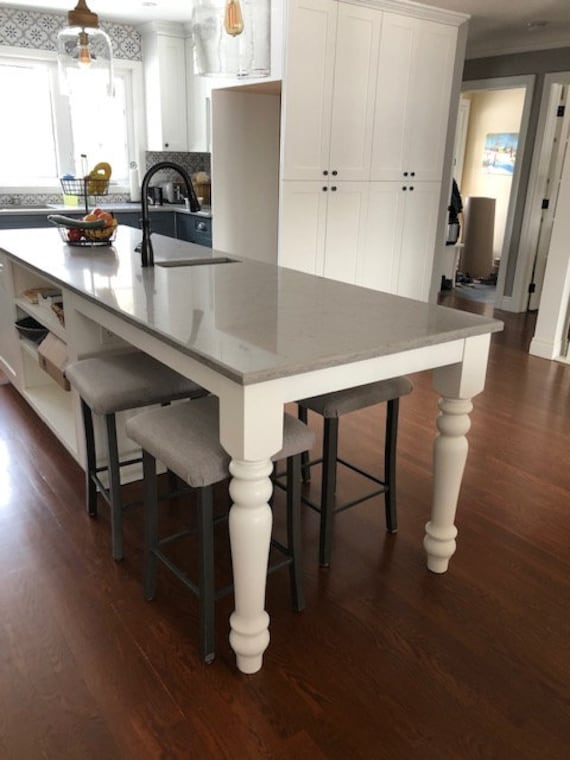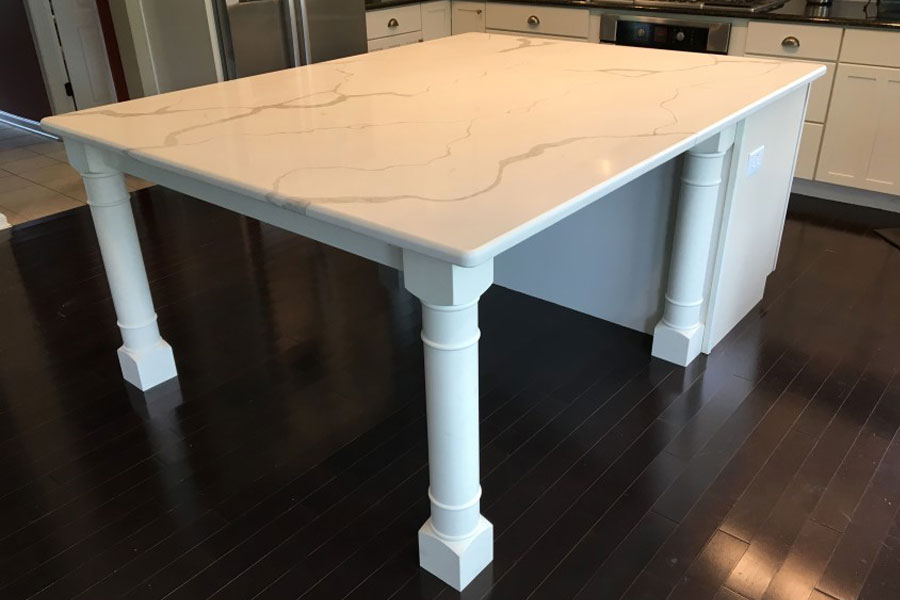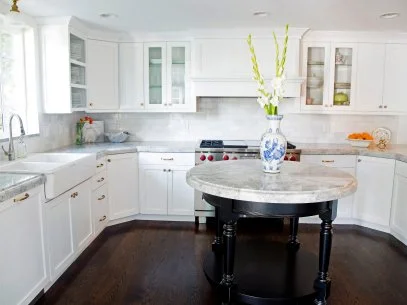Kitchen Island Legs: Enhance Your Kitchen with Strong Assistance
Wiki Article
Necessary Tips for Picking the Perfect Dining Table for Your Kitchen
Picking the ideal dining table for your cooking area is more than simply an issue of preference; it necessitates a detailed understanding of your room and requirements. The shape of the table plays a critical function; while rectangle-shaped tables fit larger locations, rounded ones foster intimacy, and extendable choices supply flexibility. The table must integrate with your kitchen's looks and accommodate your household pleasantly.Action Your Space
Picking the ideal dining table begins with a precise evaluation of your available space. This foundational step guarantees that the table not only fits easily within the room however also complements the general format and capability of your dining location.It is vital to leave adequate room for chairs to be pulled out and for individuals to move around the table without blockage. A basic policy of thumb is to permit at least 36 inches of clearance from the side of the table to the nearest wall or item of furnishings.
In addition, consider the number of individuals you normally captivate and whether you need additional area for guests. Selecting an extendable table can provide adaptability, allowing you to accommodate varying varieties of restaurants. By precisely gauging your space, you prepared for selecting a table that boosts both the aesthetics and performance of your dining location.
Choose the Right Shape

On the various other hand, round tables are exceptional for smaller kitchen areas or intimate events, as they promote discussion by enabling everyone to encounter each other. They also give a sense of coziness and can fit well in tighter spaces because of their absence of sharp corners. Oval tables offer the most effective of both worlds, combining the size of rectangle-shaped tables with the intimacy of round ones, making them flexible for numerous settings.
Square tables are another choice, especially fit for square-shaped spaces. They produce a modern and symmetrical look, fostering an equivalent dining experience for all seated.
Material Considerations
When selecting an eating table, material considerations are vital in identifying the table's durability, maintenance needs, and general aesthetic. Wood is a timeless option, offering classic charm and robustness. Woods like oak, walnut, and mahogany are especially resilient, though they can be costly. kitchen island legs. Softwoods, such as pine, are extra budget friendly yet might be vulnerable to scratches and damages.Glass-topped tables give a modern, sleek appearance and can make a space appear bigger because of their transparency. However, they call for constant cleansing to stop finger prints and smudges. Furthermore, toughened up glass is advised for its extra strength and security.

Last but not least, composite materials like MDF (Medium-Density Fiberboard) or plywood are economical choices. These materials can imitate the appearance of solid wood however might not supply the exact same durability. They are generally less complicated to tidy yet can be at risk to water damage if not effectively sealed.
Ultimately, the choice of material ought to straighten with your kitchen's style, your way of life requires, and your budget visit this site right here plan restraints. (kitchen island legs)
Seating Capacity and Comfort
How do you identify the ideal seating capacity and comfort for your dining table? For a household of 4, a rectangular table of 48 inches long or a round table with a 48-inch size is usually enough.Comfort is similarly vital. The elevation of the table need to preferably be around 30 inches, giving a balanced ergonomic stance for seated restaurants. Chairs should sit height of 18 to 20 inches to make sure a comfortable dining pose. Furthermore, think about the chair layout; upholstered seats and supportive backrests can improve eating convenience significantly, specifically during prolonged meals.
Design and Visual Appeal
Picking a table that suits your design and visual appeal includes stabilizing individual taste with the existing design of your dining room. The table is usually the focal point of the kitchen area, and its design should complement the general motif of the space. Whether explanation your kitchen area flaunts a modern-day, minimalist appearance or a rustic, farmhouse appeal, the table you choose should integrate with these aspects to develop a cohesive and inviting ambience.Take into consideration materials thoroughly; wood supplies a timeless charm and can range from abundant mahogany for a standard want to lighter oak for a contemporary feeling. Steel and glass tables, on the various other hand, can present a sleek, commercial side to your cooking area. Do not ignore the table's form-- rectangular tables are versatile and timeless, while round and oblong options can promote a more intimate dining experience.
Additionally, pay very close attention to surfaces and details. A troubled surface might include personality and heat, whereas a shiny surface can add to a tidy, modern-day aesthetic. Inevitably, your eating table must not only fit perfectly into your kitchen area's layout but additionally show your personal style, elevating the room both functionally and visually.
Conclusion
In final thought, selecting the perfect table for a kitchen necessitates cautious evaluation of space, shape, material, seating capability, and visual consistency. Making certain a minimum clearance of 36 inches assists in comfortable movement, while the option of form enhances spatial dynamics. Product selection impacts resilience and layout, making it critical to align with the kitchen area's general aesthetic. Inevitably, an appropriate dining table fosters a welcoming environment and fits the family pleasantly, hence boosting the eating experience.
When choosing a dining table, material factors to consider are critical in establishing the table's sturdiness, upkeep needs, and general visual. For a family members of four, a rectangular table of 48 inches long or a round table with a 48-inch diameter is usually enough.
Do not ignore the table's form-- rectangle-shaped tables are classic and flexible, while round and oblong alternatives can promote an extra intimate dining experience. kitchen island legs.
Report this wiki page